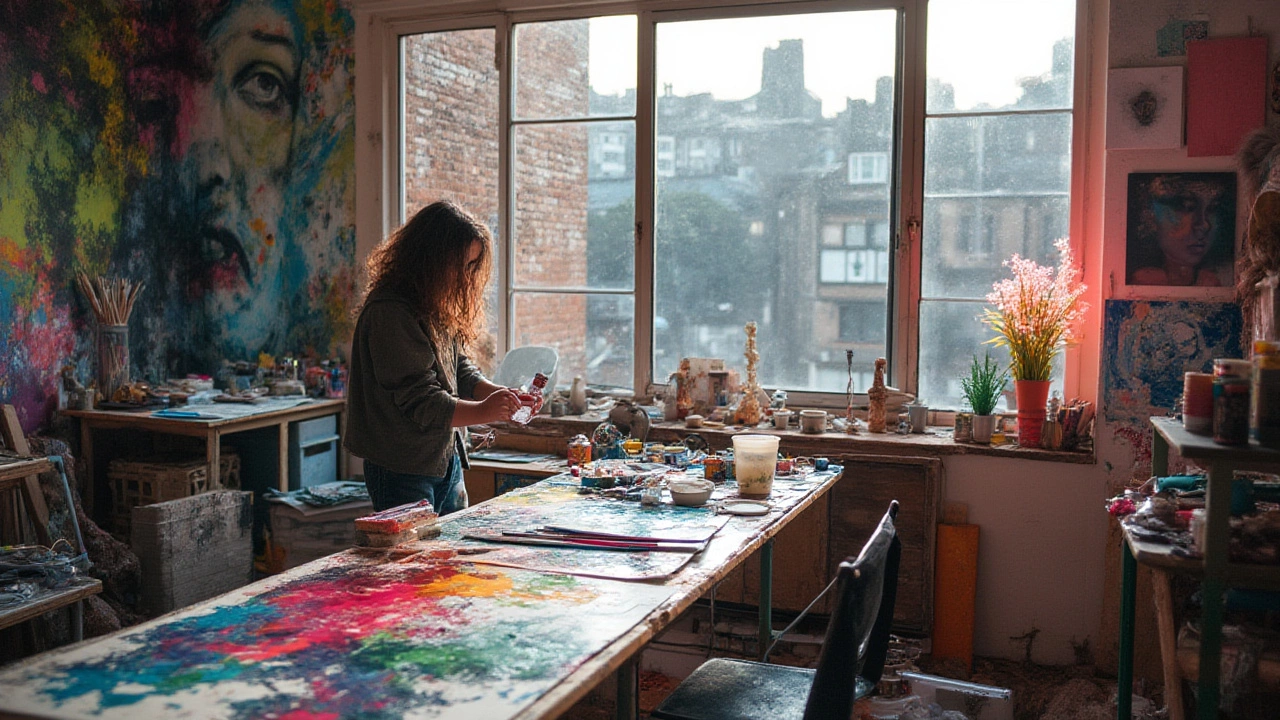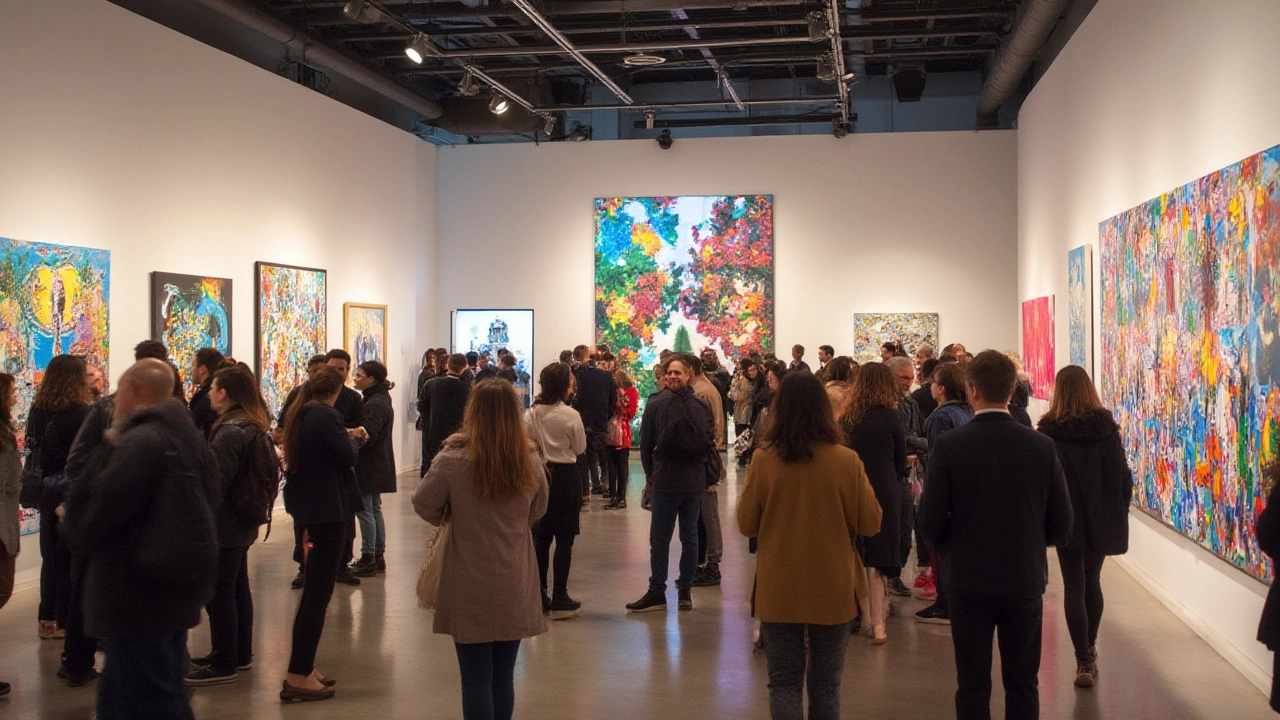Can you believe one of the world’s most expensive works, Maurizio Cattelan’s ‘Comedian’ (aka the $120,000 banana taped to a wall), went viral not for its beauty but for what it represents? Contemporary art doesn’t shy away from weird, bold, or even outright funny. What’s at its core? That’s where things get spicy. This isn’t about traditional brushstrokes, Renaissance rules, or neatly framed landscapes. It’s about raw concepts, real-world messiness, and the constant shakeup of expectations—the very DNA of modern visual culture.
The Core Elements of Contemporary Arts
If you strip contemporary art down to its bones, you’ll find these basic elements propping up every piece, no matter how oddball or abstract:
- Concept and Idea
- Medium and Technique
- Time and Space
- Audience Engagement
Let’s start with the most important: the concept. Forget about the old rulebook where art was just something pretty for your wall. Today, a piece stands out because of the story or message behind it—even if it’s a banana stuck to a wall at Art Basel. Banksy, the mysterious street artist, plays with expectations; sometimes the act of shredding his own painting on auction is the real artwork. That’s concept in action.
The medium is another battleground for creativity: paint, digital code, old shoes, recycled plastic, living plants, or even sound. Ai Weiwei uses Lego bricks to comment on freedom and censorship. In fact, many contemporary artists mix media or invent their own. There’s no gatekeeping—just pure experimentation.
Time and space are other key elements. Remember Olafur Eliasson’s sun installations or interactive light rooms? You step inside the artwork itself. A contemporary piece often lives and breathes with its viewers, has a lifespan, or changes in response to the world. Marina Abramović’s famous performance art, in which she simply sat in silence opposite visitors for 750 hours, redefined how time and personal space can become the heart of an artwork.
Finally, audience engagement flips the script. Instead of artists speaking to a passive crowd, they often ignite a conversation or invite participation. Take Yayoi Kusama’s Infinity Mirror Rooms—part selfie spot, part other-worldly experience where the viewer becomes part of the art.
The Shifting Canvas: Techniques and Materials Reimagined
There’s a wild freedom in how contemporary artists work. Forget the idea of a studio stinking of oil paint—someone’s probably building their magnum opus from digital code, recycled bottles, or even living plants.
Materials aren’t chosen just for looks anymore. These days, you’ll see artists use pretty much anything: LED lights, concrete rubble, VR headsets, or objects found in dumpsters. El Anatsui transforms bottle caps into massive, shimmering curtains. Judith Scott, who had Down syndrome and was nonverbal, became a global figure with huge fiber sculptures—each one woven from yarn, cloth, even small household items she found.
The rise of digital art is another game changer. Tools like Procreate, Photoshop, tablets, and even AI are everywhere. Beeple, the digital artist, made headlines when his NFT collage ‘Everydays: The First 5000 Days’ sold for $69 million at Christie’s in 2021. Not only was the work digital, but it also existed mostly on screens, stretching the definition of what an “artwork” even is.
Performance art and installation art are other favorites. Tino Sehgal choreographs “constructed situations”—you walk into a gallery and suddenly the guards start singing pop songs instead of, well, guarding. And then there’s eco-art: Agnes Denes planted a wheat field right in Manhattan, smack in the middle of expensive real estate, to make a piercing comment about land use.
Even photography gets a shake-up. Cindy Sherman, known for her chameleon-like self-portraits, reinvents herself with every click, blurring the line between fiction and reality. And it’s not just about snapping photos—the whole idea of what counts as a “print” is up for debate, especially now that smartphone edits and social media can turn anyone’s feed into a personal gallery.

Concept Over Tradition: The Power of Context and Message
Traditional art was all about skill, technique, and pleasing the eye. Contemporary art, though, is often driven by the idea or the context—it could look unassuming, but the statement it makes has teeth. Think about Jenny Holzer’s LED text installations in public spaces: short, punchy messages like “Protect Me From What I Want” do more than decorate—they poke and prod at society’s insecurities and power trips.
This means the story is often the star. Ai Weiwei’s porcelain sunflower seeds? Not just visually powerful, but a sharp nod to China’s history and mass production. Kara Walker’s monumental silhouettes tell complex stories about race, gender, and American identity. Knowing the background gives the work its punch, so reading the wall text at a gallery isn’t just a side note—it’s the main event.
Another twist? Artists respond to hot topics in real time. During the COVID-19 pandemic, art collectives projected messages of hope and protest onto empty city buildings. Shepard Fairey’s instantly recognizable ‘Hope’ poster of Barack Obama became an icon because of timing and message, blending activism, politics, and art all in one splashy image.
Viewers aren’t bystanders anymore. Maurizio Cattelan’s pranks or the physically immersive works by teamLab in Tokyo force you to ask, “Am I part of this?” Art that pushes boundaries, stirs controversy, or asks us to think deeply about climate change, technology, or social justice is very much contemporary.
Global Reach and Future Directions: How Contemporary Art Keeps Evolving
Flip through any major contemporary show—Venice Biennale, Art Basel, or the Whitney Biennial—and you’ll find voices from Nigeria to South Korea, Brazil to Ukraine. Art is more global, more inclusive, and no longer a club for old masters from Western Europe.
For example, in Nigeria, artists like Njideka Akunyili Crosby mix painting and collage to tell complex immigrant stories that cross continents. Digital collectives (like Pussy Riot in Russia) use guerrilla tactics and social media to get their messages across when governments censor their voices. Global issues like migration, war, climate catastrophe, and identity are all grist for the mill—often sparking urgent, buzzing debate in real time.
Trends to watch? Digital and new media art are exploding. AR, VR, and NFTs aren’t just tech toys—they’re changing the way we view, buy, and interact with art. Eco-art and activism—think Olafur Eliasson’s melting ice blocks installed in city squares to highlight climate change—carry powerful environmental messages in a way that grabs both headlines and hearts. There’s also a focus on community art and projects that bring together diverse groups—art isn’t just something you look at, it’s something you build with others.
If you want to spot the next big thing, keep an eye on artist-run spaces, street art, online exhibitions, and pop-up shows. Many major gallerists discovered breakout stars on Instagram—proof the gatekeepers aren’t what they used to be. And if you ever get stuck trying to “understand” a piece, ask yourself: what conversation is this work trying to start?
| Element | Example | Notable Fact |
|---|---|---|
| Concept | Banana-taped wall by Maurizio Cattelan | Sold for $120,000 at Art Basel Miami (2019) |
| Medium | Recycled bottle cap curtains by El Anatsui | Over 30 feet wide, exhibited globally |
| Audience Engagement | Kusama’s Infinity Rooms | Visited by millions, most photographed installations in history |
| Global Voice | Njideka Akunyili Crosby’s mixed-media | Her work addresses immigration and family histories |
| Digital Evolution | Beeple’s NFT art | Fetched $69 million at Christie’s in 2021 |
The bottom line? Contemporary arts are always on the move. They’re rebellious, borderless, and open to anyone with a bold idea. If you want to get under the skin of what’s happening now, don’t just look at what’s hanging on gallery walls—seek out local street murals, digital projects, and even the hashtag #contemporaryart to see who’s shaking things up right now, in your own backyard or halfway across the world.

